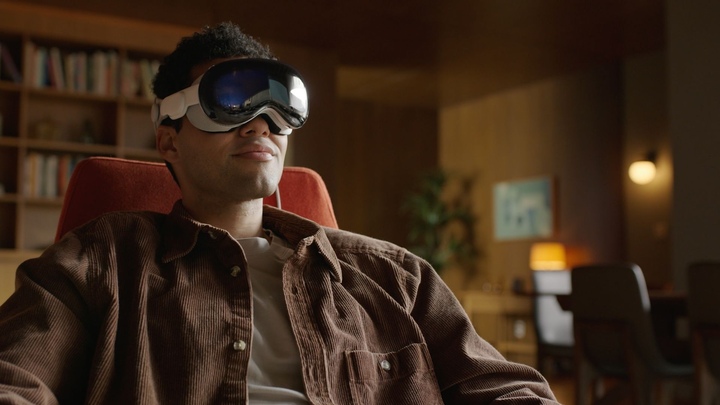How does Apple’s Vision Pro Improve Your Zoom Call Experience?

I am a law graduate from NLU Lucknow. I have a flair for creative writing and hence in my free time work as a freelance content writer.

I am a law graduate from NLU Lucknow. I have a flair for creative writing and hence in my free time work as a freelance content writer.

I am a law graduate from NLU Lucknow. I have a flair for creative writing and hence in my free time work as a freelance content writer.

I am a student pursuing my bachelor’s in information technology. I have a interest in writing so, I am working a freelance content writer because I enjoy writing. I also write poetries. I believe in the quote by anne frank “paper has more patience than person
With the Apple Vision Pro, virtual reality, and augmented reality headset, Apple is entering a new product category. The new gadget is not intended for the majority of people because it costs $3,500. It won’t be accessible until the beginning of 2024.
The Vision Pro wraps around your head entirely, covering your eyes with what appears to be a pair of goggles, similar to other VR headsets. A digital crown, resembling the one on the Apple Watch, is located on the top right side of the headset and allows you to adjust how much of the outside world enters your VR experience.

This has the effect of lowering the lights in your immediate surroundings. You may change from augmented reality to virtual reality thanks to the crown.
The most prominent feature of the Vision Pro is visible when it is in augmented reality mode: A live feed of your eyes within the headset is shown on the screen that faces the outside. It is intended that this feature, termed EyeSight, will make it seem less strange to other people.
Also Read: Why Apple is changing the ‘Hey Siri’ trigger to just ‘Siri’?
Actually, the function of the headset depends heavily on your eyes. Along with your voice, hand movements, and eye tracking, the Vision Pro is controlled by you.
Additionally, it uses your eyes as a form of authentication thanks to Apple’s new Optic ID feature, which scans your irises to unlock the Vision Pro. Optic ID is similar to Face ID but for the eyes. Apple essentially wants you to do everything with the Vision Pro.
Your work can be dispersed across a number of sizable digital monitors that are hidden from view from everyone else in the space. On a virtual screen that is 100 feet wide, you may also watch movies, play games, and FaceTime with pals. Apple Immersive Video, which combines a 180-degree view of material with spatial audio, will be supported by the headset.
A new operating system dubbed visionOS powers the headgear and all of its applications. Additionally, it will have its own version of the App Store, which Apple undoubtedly expects to be fully loaded upon release. When the Vision Pro goes on sale, Apple claims that “hundreds of thousands” of iPhone and iPad apps will be compatible with it.
A new operating system dubbed visionOS powers the headgear and all of its applications. Additionally, it will have its own version of the App Store, which Apple undoubtedly expects to be fully loaded upon release. When the Vision Pro goes on sale, Apple claims that “hundreds of thousands” of iPhone and iPad apps will be compatible with it.
Also Read: Apple Plans Major Retail Push With New Stores Across China, US
Those who saw a preview of the Vision Pro at WWDC were quick to praise it as an excellent engineering achievement, but several questioned whether using an AR/VR headset for FaceTime calls is the best option.
The device’s technology is better than that of headsets from Meta, Magic Leap, and Sony, according to Brian X. Chen, a technology columnist for the New York Times. However, Chen notes that he found the new FaceTime Persona function to be uncomfortable.

I am a law graduate from NLU Lucknow. I have a flair for creative writing and hence in my free time work as a freelance content writer.